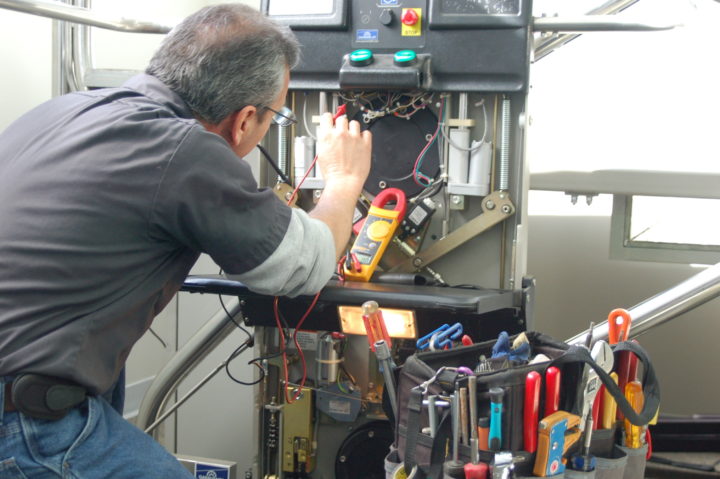Emergency Lift Repair Solutions: Best Lift Service Company Options
Emergency Lift Repair Solutions: Best Lift Service Company Options
Blog Article
Lift Maintenance Repair
Elevator Suite Britannia Street Tividale B69 2PG
01926 266127
A Thorough Technique to Enhancing Efficiency With Strategic Lift Repair Work Methods
A calculated and methodical technique to raise repair work and upkeep is necessary to take full advantage of performance and lessen downtime. By addressing typical lift problems, applying positive maintenance measures, and creating targeted fixing strategies, centers can maximize their lift systems to operate at peak performance levels.
Significance of Lift Performance Optimization
Comprehending the importance of optimizing lift performance is important for guaranteeing reputable and effective upright transport systems in various structures and frameworks. Lifts are crucial elements of modern framework, offering upright movement for occupants and products within structures of varying heights. By optimizing lift efficiency, structure owners and center managers can enhance individual experience, improve energy performance, and increase total operational effectiveness.
Efficient lift performance optimization includes numerous elements, consisting of speed, capability, power safety, intake, and maintenance requirements. Appropriately maximized lifts can lower wait times for users, particularly in high-traffic buildings, bring about enhanced complete satisfaction and performance. Additionally, optimized lifts contribute to power savings by utilizing sophisticated control systems and modern technologies that decrease power consumption without endangering efficiency.

Identifying Common Lift Issues
Identifying usual lift issues is necessary for keeping the functional performance and safety and security of upright transportation systems in structures. This issue can be a sign of troubles with the lift's electric motor, control system, or even the alignment of the lift cars and truck.
An additional widespread lift problem is weird noises emanating from the lift shaft or machinery space. These sounds can range from grinding or scuffing noises to loud clunking noises, all of which may signify underlying mechanical concerns that call for prompt focus. In addition, frequent door malfunctions, such as doors closed or closing correctly, can disrupt the smooth circulation of guests and posture safety and security threats.
Applying Positive Maintenance Procedures
To maximize the efficiency and longevity of lift systems, proactive maintenance steps play a vital role in making certain functional reliability and safety and security. lift breakdown. Implementing aggressive maintenance involves methodically inspecting, servicing, and fixing elements before they fall short, thus stopping expensive downtime and possible security dangers. On a regular basis scheduled evaluations can aid identify minor issues before they rise into significant issues, ultimately extending the life-span of lift systems
One secret facet of positive upkeep is producing a comprehensive maintenance timetable based on maker recommendations and sector best techniques. This schedule must describe tasks such as lubrication, positioning her response checks, and part replacements at defined intervals. In addition, executing problem monitoring methods, such as resonance analysis and thermal imaging, can aid spot very early signs of wear or malfunction.
In addition, training maintenance team on proper evaluation strategies and preventive upkeep treatments is important for the effective execution of proactive maintenance actions. By fostering a culture of positive upkeep within a company, lift systems can operate at peak performance degrees, decreasing disruptions and making sure the safety of users.
Developing Targeted Repair Service Strategies
Upon analyzing the upkeep documents and performance data, the design group can establish targeted repair work plans to enhance and attend to certain issues lift system functionality. These repair strategies are customized to the determined issues, making More Info certain that sources are focused on fixing vital issues efficiently. By prioritizing repairs based upon their effect on performance and safety, the targeted repair work strategies aid lessen downtime and maintenance prices while making the most of the lift system's reliability.
Creating these plans involves a thorough evaluation of the lift system elements, including electric motors, cable televisions, brakes, and control systems. Through this in-depth assessment, the engineering group can determine the origin triggers of any type of malfunctions or degradation in performance. This info is then utilized to develop a roadmap for the fixing procedure, laying out the needed actions, timeline, and sources required to attend to each issue successfully.
Additionally, targeted repair strategies may consist of preventative measures to improve the lift system's long life and efficiency. By proactively dealing with possible issues before they rise, these strategies add to the view publisher site total effectiveness and safety and security of the lift system.
Utilizing Data-Driven Insights
Taking advantage of the power of data-driven understandings is critical in optimizing lift system performance and upkeep effectiveness. By leveraging data analytics, lift drivers can make informed decisions that cause boosted functional efficiency and cost savings. With the evaluation of historic efficiency patterns, information and trends can be identified, enabling anticipating upkeep approaches to be implemented. These predictive maintenance methods assist protect against unanticipated failures, reduce downtime, and extend the life expectancy of lift systems.

Final Thought
To conclude, optimizing lift efficiency is critical for making certain efficiency and safety in structures. By identifying typical lift problems, carrying out positive maintenance procedures, developing targeted repair work plans, and utilizing data-driven insights, companies can enhance performance and reduce downtime. It is necessary to take a thorough strategy to lift repair service methods to make best use of operational effectiveness and ensure the longevity of lift systems.
By addressing usual lift issues, executing positive maintenance measures, and creating targeted repair service strategies, centers can enhance their lift systems to operate at peak performance degrees.One more common lift problem is unusual noises rising from the lift shaft or machinery room.Upon evaluating the maintenance documents and efficiency data, the design group can establish targeted repair work plans to resolve certain issues and maximize lift system performance. By prioritizing fixings based on their influence on performance and safety, the targeted fixing plans aid lessen downtime and maintenance prices while making best use of the lift system's dependability.
It is important to take a thorough method to raise fixing techniques to maximize functional performance and guarantee the durability of lift systems.
Report this page